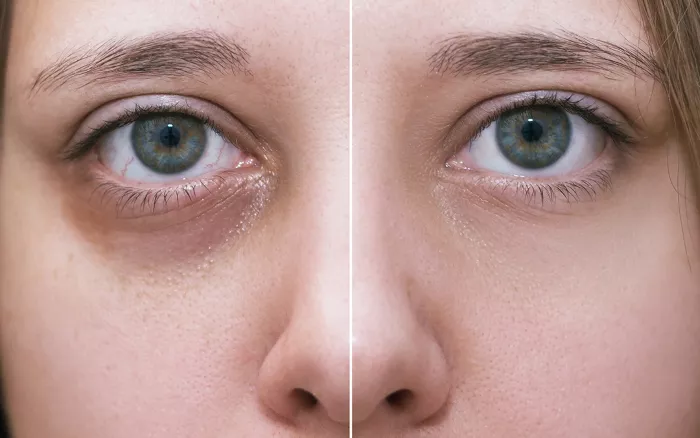Dark circles under the eyes can make you look tired, older, or unhealthy. While creams and home remedies offer temporary fixes, many people seek permanent solutions through cosmetic surgery. If you’re considering this route, here’s everything you need to know about the best procedures, risks, recovery, and expected results.
What Causes Dark Circles Under the Eyes?
Before exploring surgical options, it’s important to understand why dark circles form. Common causes include:
Thin skin – The skin under the eyes is delicate, making blood vessels more visible.
Hollow tear troughs – Volume loss creates shadows that look like dark circles.
Pigmentation issues – Excess melanin can cause a darker appearance.
Genetics – Some people naturally have darker under-eye areas.
Aging – Collagen loss makes skin thinner and veins more noticeable.
Since dark circles have multiple causes, the right treatment depends on your specific issue.
Best Cosmetic Surgery Procedures for Permanent Dark Circle Removal
Several cosmetic procedures can permanently reduce or eliminate dark circles. Here are the most effective options:
1. Lower Blepharoplasty (Eyelid Surgery)
What it does: Removes excess fat, tightens skin, and smoothens the under-eye area.
Best for: Dark circles caused by puffy bags, loose skin, or hollowing.
Procedure:
- A surgeon makes tiny incisions below the lash line or inside the eyelid.
- Excess fat is repositioned or removed.
- Loose skin is tightened.
Recovery:
- Swelling and bruising last 1-2 weeks.
- Full results visible in about a month.
Results: Permanent improvement, though aging may cause some changes over time.
2. Fat Grafting (Fat Transfer)
What it does: Adds volume to hollow under-eyes, reducing shadowing.
Best for: Dark circles due to volume loss or deep tear troughs.
Procedure:
- Fat is taken from another body area (like the abdomen).
- It’s purified and injected under the eyes.
Recovery:
- Mild swelling for 1-2 weeks.
- Some fat may be reabsorbed, requiring touch-ups.
Results: Long-lasting (years), but not always permanent.
3. Laser Resurfacing
What it does: Removes pigmentation and stimulates collagen for thicker skin.
Best for: Dark circles from hyperpigmentation or thin skin.
Procedure:
- A laser removes the top skin layers.
- New, healthier skin grows back.
Recovery:
- Redness and peeling for 5-10 days.
- Full healing in 2-3 weeks.
Results: Can be permanent if sun damage is avoided.
4. Chemical Peels
What it does: Lightens pigmentation by exfoliating the skin.
Best for: Dark circles caused by melanin buildup.
Procedure: A chemical solution is applied to peel off old skin.
Recovery:
- Flaking for about a week.
- Multiple sessions may be needed.
Results: Long-term, but maintenance may be required.
5. PRP (Platelet-Rich Plasma) Therapy
What it does: Uses your own blood to rejuvenate skin and improve thickness.
Best for: Mild dark circles with thin skin or poor circulation.
Procedure: Blood is drawn, processed, and injected under the eyes.
Recovery:
- Minor swelling for 1-2 days.
- Best results after 3-4 sessions.
Results: Lasts 1-2 years; not permanent.
Risks and Side Effects of Dark Circle Surgery
All cosmetic procedures carry some risks. Common concerns include:
Swelling & bruising – Expected for 1-2 weeks.
Infection – Rare but possible if aftercare isn’t followed.
Uneven results – May require correction.
Scarring – Minimal with skilled surgeons.
Choosing an experienced board-certified surgeon reduces these risks.
How to Choose the Right Procedure for You
The best treatment depends on your dark circle cause:
Hollow eyes? – Fat grafting or fillers.
Puffy bags? – Lower blepharoplasty.
Pigmentation? – Laser or peels.
A consultation with a dermatologist or plastic surgeon will help determine the best option.
Recovery and Aftercare Tips
To ensure the best results:
Avoid rubbing your eyes – Can disrupt healing.
Use cold compresses – Reduces swelling.
Sleep elevated – Prevents fluid buildup.
Skip makeup for a week – Lets skin heal.
Wear sunscreen – Protects new skin.
How Long Do Results Last?
Blepharoplasty & fat grafting – Permanent or long-lasting.
Laser & peels – Years, but sun exposure can reverse effects.
PRP & fillers – Temporary (1-2 years).
Non-Surgical Alternatives
If surgery isn’t for you, consider:
- Dermal fillers (temporary volume).
- Microneedling (boosts collagen).
- Topical retinoids (thickens skin over time).
Conclusion
Cosmetic surgery offers permanent or long-term solutions for dark circles. The best procedure depends on your skin type, concerns, and goals. Always consult a qualified specialist to explore your options safely.
Related topics:
Why Do I Have Bags Under My Eyes?
How To Get Rid Of Genetic Eye Bags?
How to get rid of bags under eyes with ice?


